Contents
| |||||
| Decades: | |||||
|---|---|---|---|---|---|
| See also: | Other events of 1706 List of years in Spain | ||||
Events in the year 1706 in Spain .

| |||||
| Decades: | |||||
|---|---|---|---|---|---|
| See also: | Other events of 1706 List of years in Spain | ||||
Events in the year 1706 in Spain .

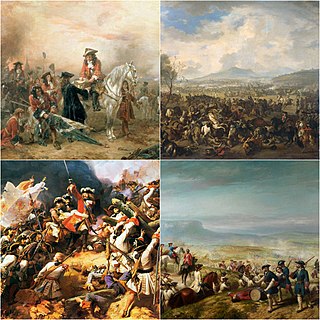
The War of the Spanish Succession was a European great power conflict fought between 1701 and 1714. The immediate cause was the death of the childless Charles II of Spain in November 1700, which led to a struggle for control of the Spanish Empire between supporters of the French Bourbons and the Austrian Habsburgs. Charles had named as his heir Philip (Bourbon) of Anjou, a grandson of Louis XIV of France, whose claim was backed by France and most of Spain. His rival, Archduke Charles (Habsburg) of Austria, was supported by the Grand Alliance, whose primary members included Austria, the Dutch Republic, and Great Britain. Significant related conflicts include the Great Northern War (1700–21) and Queen Anne's War (1702–13).

The Battle of Almansa took place on 25 April 1707, during the War of the Spanish Succession. It was fought between an army loyal to Philip V of Spain, Bourbon claimant to the Spanish throne, and one supporting his Habsburg rival, Archduke Charles of Austria. The result was a decisive Bourbon victory that reclaimed most of eastern Spain for Philip.
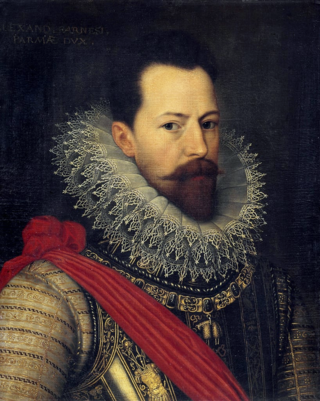
Alexander Farnese was an Italian noble and condottiero, who was Duke of Parma, Piacenza and Castro from 1586 to 1592, as well as Governor of the Spanish Netherlands from 1578 to 1592. Nephew to King Philip II of Spain, he served in the Battle of Lepanto and the subsequent campaigns of the Holy League against the Ottoman Empire, being latter appointed general of the Spanish army during the Dutch revolt until his death in 1592. During the French Wars of Religion, he decisively relieved Paris for the Catholic League.

James FitzJames, 1st Duke of Berwick was a French Royal Army officer and nobleman who was the illegitimate son of James II of England by Arabella Churchill, the sister of John Churchill, 1st Duke of Marlborough. Berwick was a successful general in the service of Louis XIV.
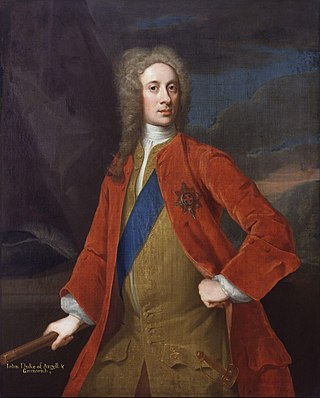
Field Marshal John Campbell, 2nd Duke of Argyll, 1st Duke of Greenwich,, styled Lord Lorne from 1680 to 1703, was a Scottish nobleman and senior commander in the British Army. He served on the continent in the Nine Years' War and fought at the Siege of Kaiserswerth during the War of the Spanish Succession. He then went on to serve as a brigade commander during the later battles of the War of the Spanish Succession, and was subsequently given command of all British forces in Spain at the instigation of the Harley Ministry. After conducting a successful evacuation of the troops from Spain, he became Commander-in-Chief, Scotland. During the Jacobite Rebellion, he led the government army against the Jacobite forces led by the Earl of Mar at the Battle of Sheriffmuir. Afterwards he served as Lord Steward and then Master-General of the Ordnance under the Walpole–Townshend Ministry.

The siege of Haarlem was an episode of the Eighty Years' War. From 11 December 1572 to 13 July 1573 an army of Philip II of Spain laid bloody siege to the city of Haarlem in the Netherlands, whose loyalties had begun wavering during the previous summer. After the naval battle of Haarlemmermeer and the defeat of a land relief force, the starving city surrendered and the garrison was massacred. The resistance nonetheless was taken as an heroic example by the Orangists at the sieges of Alkmaar and Leiden.

The siege of Turin took place from June to September 1706, during the War of the Spanish Succession. A French army led by Louis de la Feuillade besieged the Savoyard capital of Turin, whose relief by Prince Eugene of Savoy has been called the most brilliant campaign of the war in Italy. The siege is also famous for the death of Piedmontese hero Pietro Micca.

The Italian War of 1551–1559 began when Henry II of France declared war against Holy Roman Emperor Charles V with the intent of recapturing parts of Italy and ensuring French, rather than Habsburg, domination of European affairs. The war ended following the signing of the Treaty of Cateau-Cambrésis between the monarchs of Spain, England and France in 1559. Historians have emphasized the importance of gunpowder technology, new styles of fortification to resist cannon fire, and the increased professionalization of the soldiers.
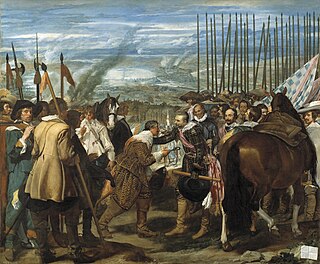
The siege of Breda of 1624–1625 occurred during the Eighty Years' War. The siege resulted in Breda, a Dutch fortified city, falling into the control of the Army of Flanders.

The siege of Toulon took place between 29 July to 21 August 1707 during the War of the Spanish Succession, when a combined Savoyard-Imperial army supported by a British naval force, attacked the French base at Toulon.
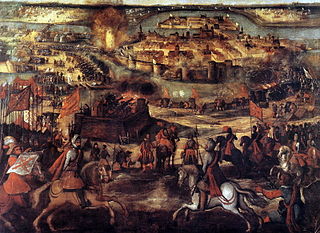
The siege of Maastricht was a battle of the Eighty Years' War which lasted from March 12 to July 1, 1579. The Spanish were victorious.
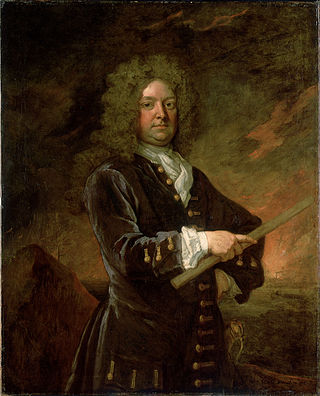
Admiral of the Fleet Sir John Leake was a Royal Navy officer and politician. As a junior officer he saw action at the Battle of Texel during the Third Anglo-Dutch War. He then distinguished himself when he led the convoy that broke the barricading boom at Culmore Fort thereby lifting the siege of Derry during the Williamite War in Ireland. As a captain he saw action in some of the heaviest fighting at the Battle of Barfleur and was also involved in a successful attack on the French ships at the Battle of La Hogue during the Nine Years' War.
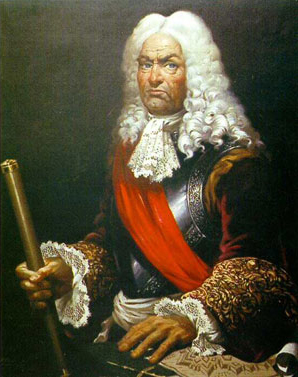
Teniente generalJorge Próspero de Verboom, 1st Marquess of Verboom was a Spanish Army officer and nobleman who served as the Captain General of Catalonia from 1737 to 1738. A prominent military engineer in the Spanish army, Philip V of Spain granted him the aristocratic title of "Marquess of Verboom" on 9 January 1727.

The siege of Barcelona took place between 14 September and 19 October 1705 during the War of the Spanish Succession when a multinational Grand Alliance army led by Lord Peterborough, supporting the Habsburg pretender to the Spanish throne, captured the city of Barcelona from its Spanish Bourbonic defenders, most of whom then joined the Habsburg army.

The siege of Barcelona took place between 3 and 27 April 1706 during the War of the Spanish Succession when a Franco-Spanish army laid siege to Barcelona in an attempt to recapture the city following its fall to an English-led Allied army the previous year.

The Army of Flanders was a field army of the Spanish Army based in the Spanish Netherlands between the 16th and 18th centuries. It was one of the longest-serving field armies of the early modern era, being founded in 1567 and disbanded in 1706. Taking part in numerous battles of the Eighty Years' War and Thirty Years' War, it employed or pioneered many developing military concepts, including permanent units (tercios), barracks and military hospitals long before they were adopted in most of Europe. As a result, the Army of Flanders has been considered the world's de facto first modern professional standing army. Sustained at huge cost and at significant distances from Spain via the Spanish Road, the Army of Flanders also became infamous for successive mutinies and its ill-disciplined activity on and off the battlefield, including the sack of Antwerp in 1576.
The siege of Alcántara was a siege between Allied and French forces in 1706, as part of the War of the Spanish Succession. Lord Galway led a force of British and Portuguese soldiers to attack the garrison at Alcántara. Part of James FitzJames, 1st Duke of Berwick's army was lost for the French. In total, ten French battalions laid down their arms and surrendered 60 guns to Galway's troops. The Allies proceeded to occupy Madrid two months later.
The Siege of Ciudad Rodrigo was a successful siege of the Spanish city of Ciudad Rodrigo, between 18 September and 4 October 1707, in which a Franco-Spanish army under command of Alexandre Maître, Marquis de Bay conquered the city.
The siege of Alicante took place from December 1708 to April 1709 during the War of the Spanish Succession. The city of Alicante was besieged by a French and Spanish force loyal to Philip V. They were opposed by the garrison, an Allied force under the command of John Richards.

The siege of Ostend took place during the War of the Spanish Succession. In the wake of the Allied victory over the French at the Battle of Ramillies in May 1706, town and cities across the Spanish Netherlands rapidly surrendered to the Duke of Marlborough's victorious forces often without a fight. Ostend, a port on the North Sea coast, offered more resistance.